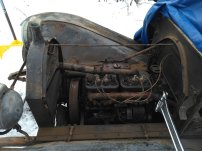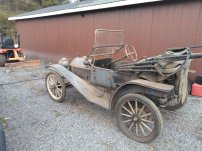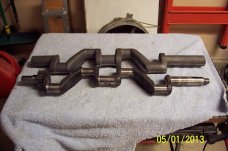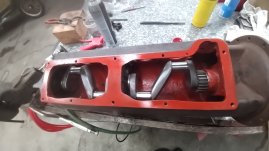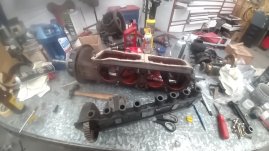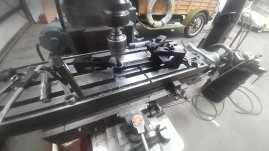99Panhard
Stainless
- Joined
- Feb 22, 2006
- Location
- Smithfield, Rhode Island
You don't say what engine you are working on but they are not all the same. A few cars are amenable to using inserts...those with very stiff crankshafts like the Franklin (7 main bearings)....most cars had fewer and some had only two. The crankshafts on early cars flex much more than later cranks. Inserts have a very thin coating of Babbitt that will be worn through in very short order if a crank flexes. The top end engine rebuilders I know all bore the bearings very carefully, sometimes taking all day to do a 7-main Pierce Arrow engine. The standard clearance is usually about .001 or .0015 for each inch of diameter. My 1910 Mitchell 4-cylinder has 3 mains and a 2" crank so I'm aiming for about .002 to .0025 clearance. Because I've never bored mains before I'll err on the tight side and use Timesaver to lap them in. That is the only abrasive I think is safe to use. I would not mix the Timesaver with the engine oil ... which isn't necessary with an internal combustion engine if you have it in a stand, upside down. When properly done the crank should turn easily with hand pressure only. This was essential when cars were crank started but is true for cars with electric starters as well.
There is nothing wrong with Babbitt bearings in cars if done correctly. The problem is that many seem to think it's as foolproof as inserts. It isn't. Inserts may work in connecting rods because the flex will have little effect on them but I'd prefer to Babbitt them.
The Mitchell engine was not very well made. The Babbitt was poured directly into the aluminum crankcase with brass pins to keep them in place and is almost 1/4" thick. I'm going to make bronze shells and use a thinner Babbitt layer. Quite a few early cars (pre-WWI) had bronze bearings. I've thought about doing that but I'm not sure I want to experiment.
There is nothing wrong with Babbitt bearings in cars if done correctly. The problem is that many seem to think it's as foolproof as inserts. It isn't. Inserts may work in connecting rods because the flex will have little effect on them but I'd prefer to Babbitt them.
The Mitchell engine was not very well made. The Babbitt was poured directly into the aluminum crankcase with brass pins to keep them in place and is almost 1/4" thick. I'm going to make bronze shells and use a thinner Babbitt layer. Quite a few early cars (pre-WWI) had bronze bearings. I've thought about doing that but I'm not sure I want to experiment.



